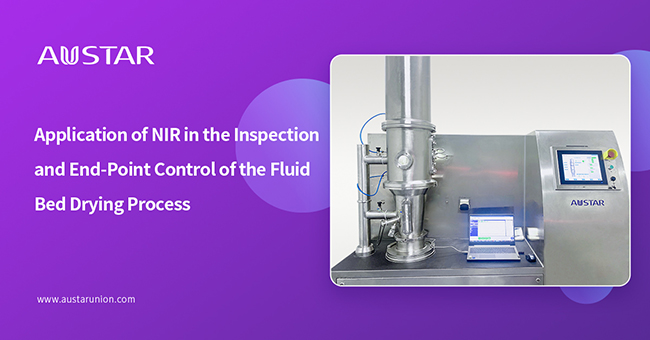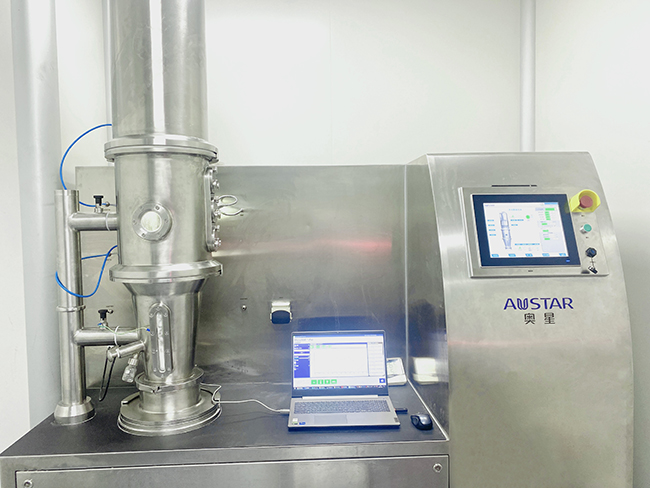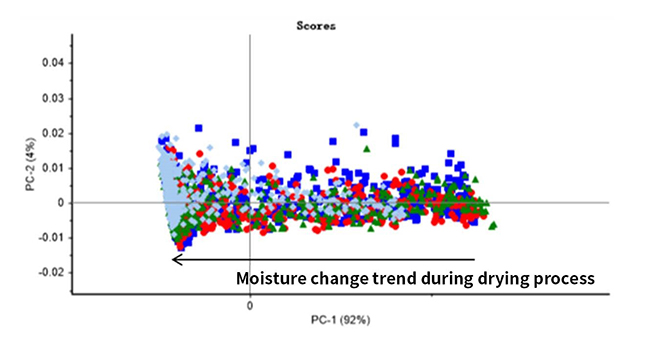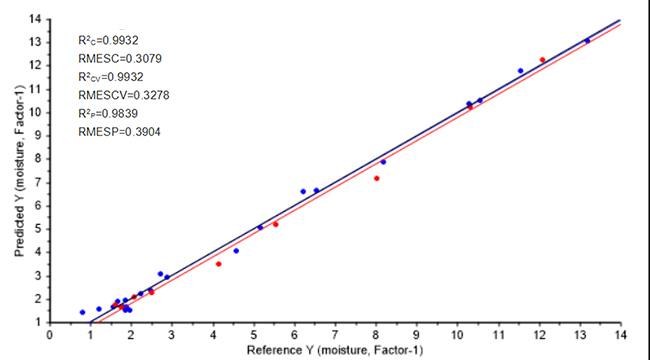Application of NIR in the Inspection and End-Point Control of the Fluid Bed Drying Process
News & Insights2024-07-15
Building on our previous discussion on the application of Process Analytical Technology (PAT) in Oral Solid Dosage (OSD) manufacturing, this article delves into the use of Near-Infrared (NIR) spectroscopy for the inspection and endpoint control of the fluid bed drying process.

Introduction to Fluid Bed Drying
Fluid bed drying is a highly effective method for drying solid granules post-wet milling. Rapid drying is essential to prevent caking, negatively impacting subsequent operations. The drying process’s key factors include inlet air temperature, humidity, and air rate. The final dryness of the product is determined by its moisture content. Issues such as excessively high moisture, uneven drying, or too low moisture content can affect product quality and the efficiency of downstream processes. Real-time monitoring of moisture content during drying is therefore critical.
NIR Technology for Moisture Monitoring
NIR spectroscopy provides a non-intrusive and non-destructive method for real-time monitoring of moisture content, which aids in accurately determining the drying endpoint in fluid bed drying processes
Experimental Methodology
In our study, we employed a mixture of metformin hydrochloride, lactose, microcrystalline cellulose, and polyvidone for high shear wet granulation, followed by wet milling and fluid bed drying. The objective was to develop a model for real-time moisture content monitoring. We prepared four batches of samples to create a quantitative model correlating NIR spectra with moisture content measured by a rapid moisture meter.

Figure 1 NIR installation on the fluid bed
Setup and Procedure:
An experimental fluid bed dryer and a MicroNIR PAT-U NIR spectrometer were used for online moisture content inspection (see Figure 1). Each batch, weighing approximately 800 grams, was dried under consistent conditions: an inlet air temperature of 60°C and an air flow rate of 120 m³/h. Samples were taken every 1 to 3 minutes during the drying process, with corresponding spectra recorded. These samples were sealed and tested for moisture content using a rapid moisture meter. Calibration and validation samples from n-1 batches were used to build quantitative models, while the remaining batch was used for external validation, to compare the differences between the model and primary data. Please refer to Figure 2 for spectrum acquisition:

Figure 2 Original spectrogram of different batches
Data Analysis:
Initially, Principal Component Analysis (PCA) was employed to analyze the spectrum, as illustrated in Figure 3. The scores plot for the batches indicates that the drying trends are generally consistent across all batches. The data is relatively concentrated, effectively reflecting the changes in moisture content throughout the drying process.

Figure 3: PCA drawing of different batches
The original NIR spectrogram is presented in Figure 2. The NIR spectrum features broad peaks without distinct characteristic peaks, but there is a significant difference in the range of 1400-1600 nm. This range is relevant to the sum-frequency and double-frequency absorption of O-H group vibrations. However, the spectrum exhibits a considerable baseline shift, and chemometric tools need to be used to process the original spectrum to obtain the best quantitative analysis model. In this article, Standard Normal Variate (SNV) and second-order derivative preprocessing methods are used to preprocess the spectrum, address baseline drift and other background interference, while also reducing noise impact. The processed spectrum is shown in Figure 4:

Figure 5 PLSR established quantitative moisture model
Select No. n batch as the external validation set and perform external validation of online quantitative moisture model during the fluid bed drying process. The predicted results and the test results by the rapid moisture meter are shown in Figure 6:

Figure 6 Comparison between model prediction results and rapid moisture meter test results
Conclusion
This study demonstrates the application of MicroNIR PAT-U in online monitoring, analysis, and evaluation of moisture content during the fluid bed drying process. We established a quantitative online model for NIR measurement of moisture content. The results, with R2CV, R2P, RMSECV, and RMSEP values of 0.9932, 0.9839, 0.3278, and 0.3904 respectively, demonstrate excellent linearity and accuracy, confirming the feasibility of online moisture content inspection. The strong correlation between moisture content and spectral absorbance can effectively reflect the changing trend of moisture content during the drying process. This approach not only facilitates real-time quality attribute inspection but also integrates with the process control system for feedback control of the drying endpoint.
We will continue to share more case studies on PAT applications in OSD manufacturing. Thank you for your ongoing interest and support.







 Search
Search 中文
中文











